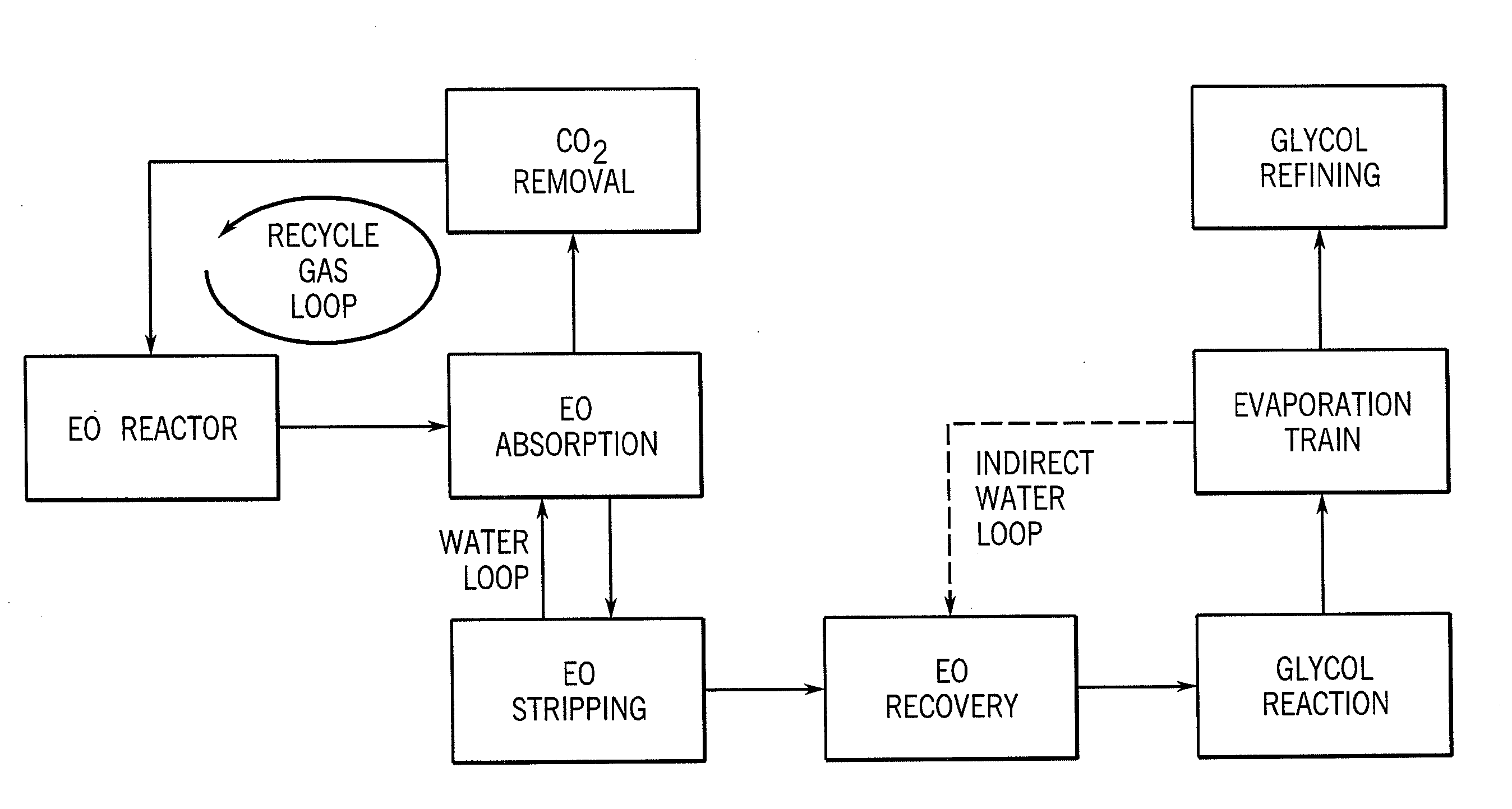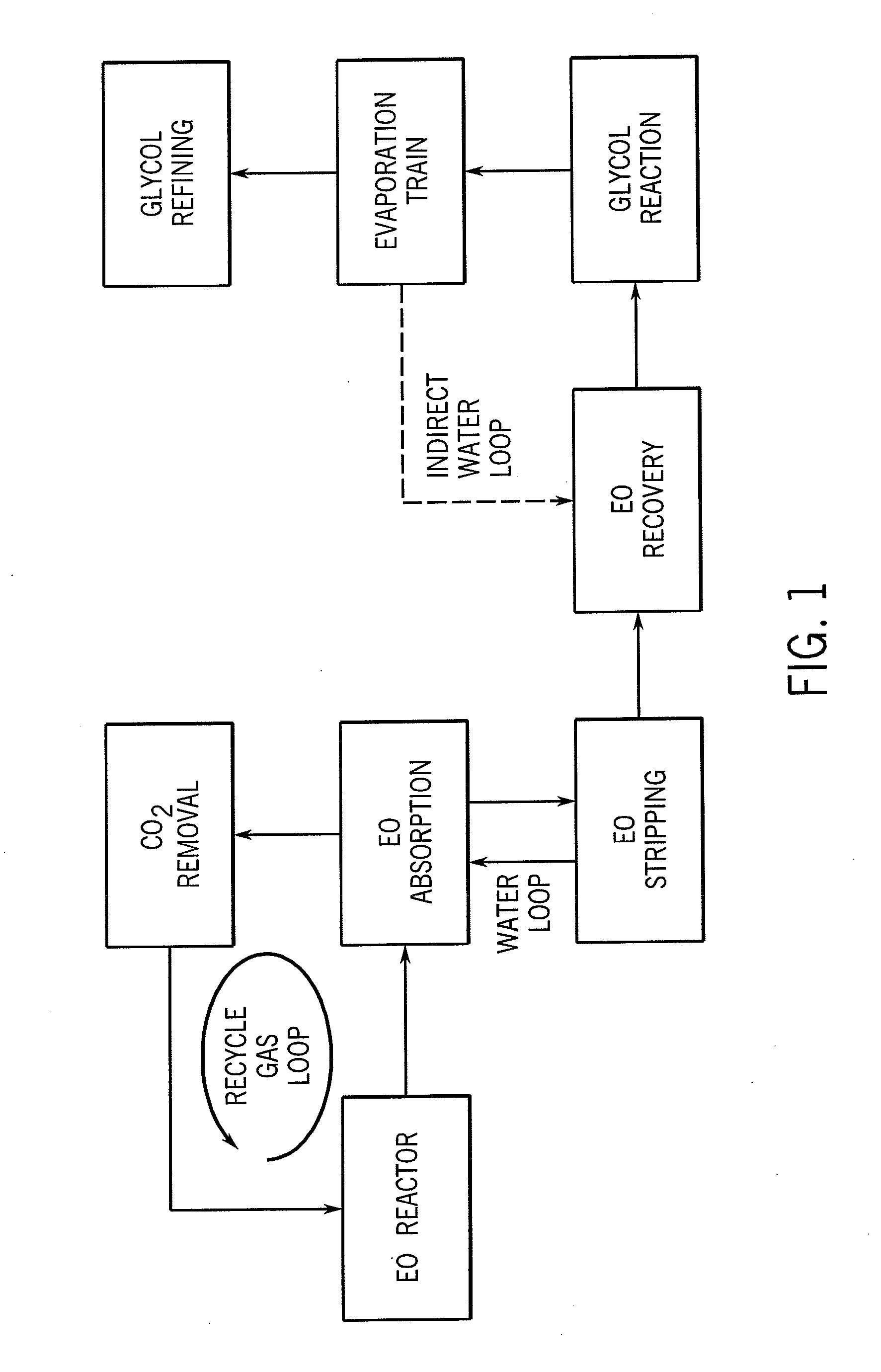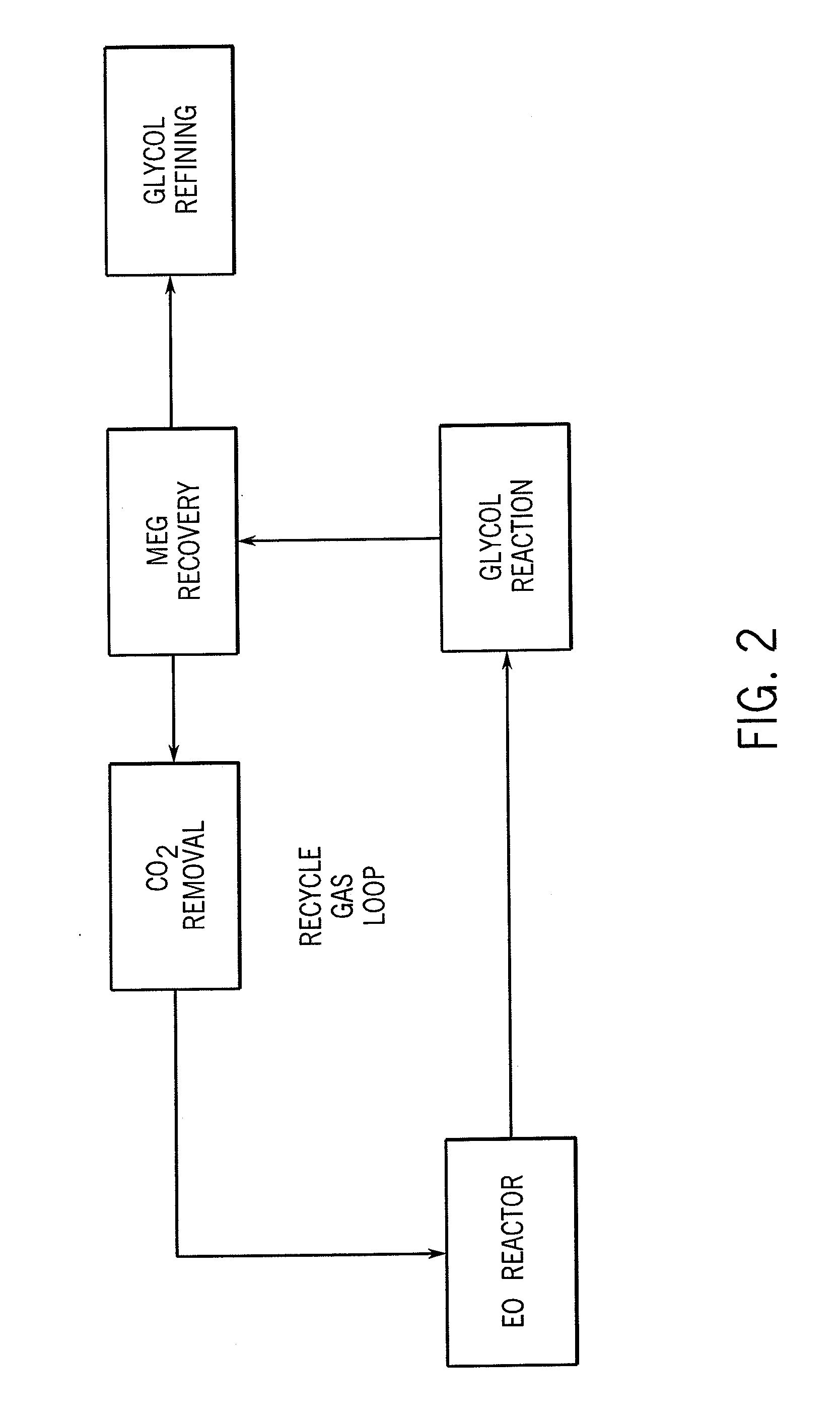Two-Stage, Gas Phase Process for the Manufacture of Alkylene Glycol
a technology of alkylene glycol and gas phase, which is applied in the preparation of oxygen-containing compounds, hydroxy group addition, organic chemistry, etc., can solve the problems of reducing the overall residence time of ethylene oxide in the system, and achieve the reduction of steps and equipment, energy and capital costs, and the effect of reducing the overall residence time of ethylene oxid
- Summary
- Abstract
- Description
- Claims
- Application Information
AI Technical Summary
Benefits of technology
Problems solved by technology
Method used
Image
Examples
specific embodiments
[0085]General Synthesis and Materials.
[0086]All gas mixture cylinders of ethylene oxide (EO), ethylene and N2 are purchased from Air Gas and analyzed versus an external calibration standard purchased from Air Gas (all cylinders contain a certificate of analysis measured gravimetrically and are reported in mol %). Carbon dioxide (CO2) gas cylinders are purchased from Airgas and used as received. Carbon binder is obtained from Chemplex Industries and used as received. Molecular sieve absorbent is purchased from the Kurt J. Lesker Company in ¼ inch extrudates. Zeolite beta is purchased from Zeolyst International. All pellets and extrudates are crushed and sieved through 24×40 or 16×30 mesh screens prior to use unless otherwise noted. All other reagents are purchased from the Aldrich Chemical Company and used as received unless otherwise noted.
[0087]Catalyst Synthesis
[0088]Hydrotalcites: Sodium hydroxide (NaOH) and sodium carbonate (Na2CO3) are dissolved in deionized water in a pint gla...
PUM
| Property | Measurement | Unit |
|---|---|---|
| pressure | aaaaa | aaaaa |
| pressure | aaaaa | aaaaa |
| temperature | aaaaa | aaaaa |
Abstract
Description
Claims
Application Information
 Login to View More
Login to View More - R&D
- Intellectual Property
- Life Sciences
- Materials
- Tech Scout
- Unparalleled Data Quality
- Higher Quality Content
- 60% Fewer Hallucinations
Browse by: Latest US Patents, China's latest patents, Technical Efficacy Thesaurus, Application Domain, Technology Topic, Popular Technical Reports.
© 2025 PatSnap. All rights reserved.Legal|Privacy policy|Modern Slavery Act Transparency Statement|Sitemap|About US| Contact US: help@patsnap.com



